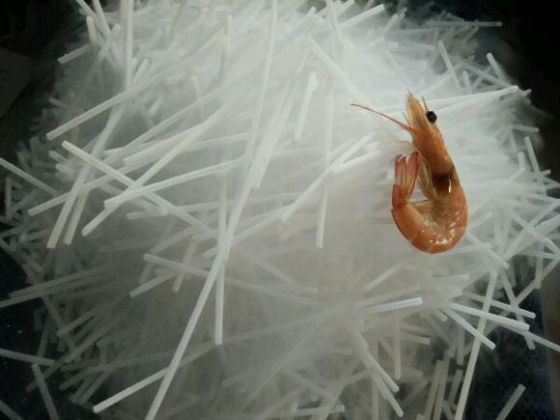Đá khô là CO2 đông đặc, điểm nóng chảy của nó là -78,5oC và nhiệt độ xung quanh sẽ giảm xuống khoảng 20oC khi nó bay hơi. Vì vậy, dễ bị thăng hoa trong quá trình bảo quản hàng ngày khiến đá khô trở nên nhỏ hơn và gây thất thoát. Vì vậy, một hộp đựng đá khô chuyên dụng phải được sử dụng cho bảo quản và vận chuyển đá khô, có thể làm giảm tổn thất một cách hiệu quả do sự bay hơi của đá khô.

Cần lưu ý gì khi vận chuyển bằng đá khô?
- Nếu có thể, nên bảo quản đá khô ở môi trường dưới -80 ° C và càng ít bảo quản cùng với các vật dụng khác càng tốt. Khi sử dụng các mục đã đóng như hộp đựng đá khô, chừa một khoảng trống trong hộp đựng. Điều này là do đá khô rất dễ bay hơi. Nếu là môi trường khép kín, một lượng lớn CO2 sinh ra do bay hơi sẽ tích tụ trong môi trường khép kín, khiến áp suất không khí bên trong tăng liên tục và có nguy cơ nổ.
- Để bảo quản đá khô, hãy sử dụng hộp bảo quản chuyên dụng. Một hộp bảo quản tốt có thể giảm thất thoát đá khô xuống còn 6‰. Nếu không có hộp đặc biệt, bạn cũng có thể sử dụng hộp xốp thông thường để đựng đá khô. Nếu không cần thiết, cố gắng không cắt cả cục đá khô thành từng miếng hoặc hạt nhỏ. Điều này là do đá khô được cắt thành từng miếng nhỏ sẽ thăng hoa dễ dàng hơn so với cả một cục đá khô.
- Đá khô bay hơi nhanh, chủ yếu là do nhiệt độ cao. Vì vậy, bạn không thể đặt đá khô ở nơi có nhiệt độ cao mà hãy cố gắng bảo quản sản phẩm đá khô ở môi trường mát mẻ, thông thoáng. Điều này vừa an toàn vừa giúp đá khô được giữ lạnh lâu hơn và không dễ tan chảy.
- Thông thường, khi vận chuyển hải sản, chúng ta cần phủ đá khô xung quanh hải sản để hải sản được tươi lâu. Khi chọn đá khô tốt nhất nên sử dụng khối đá khô hình khối. Những viên đá khô sẽ giữ cho hải sản có tác dụng làm mát lâu hơn trong quá trình vận chuyển.